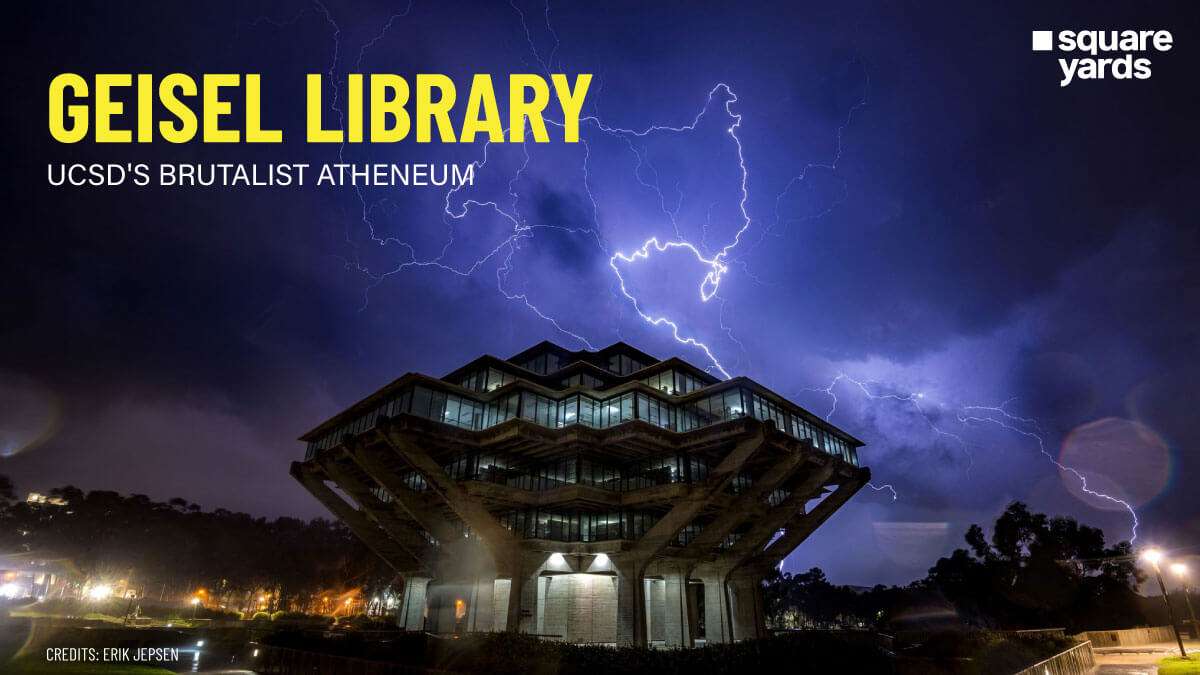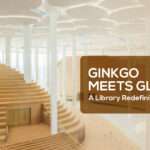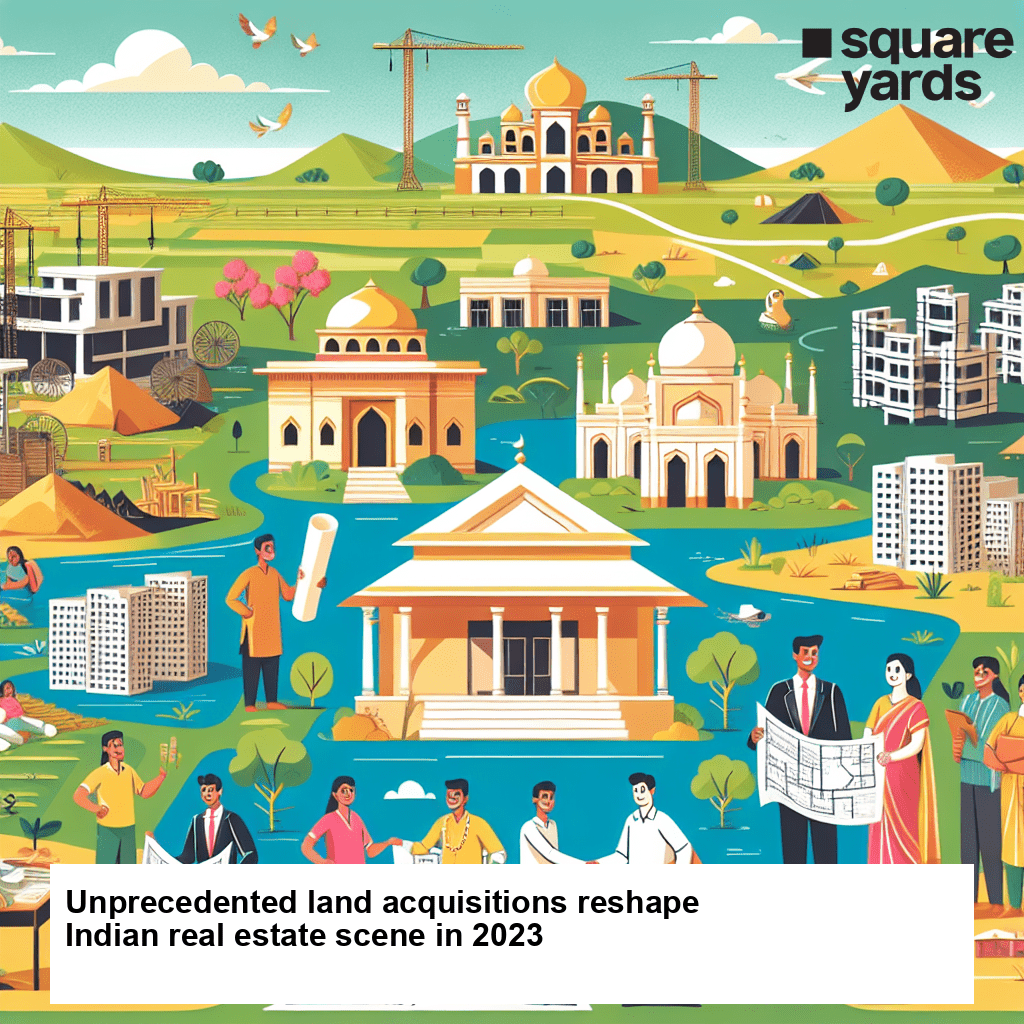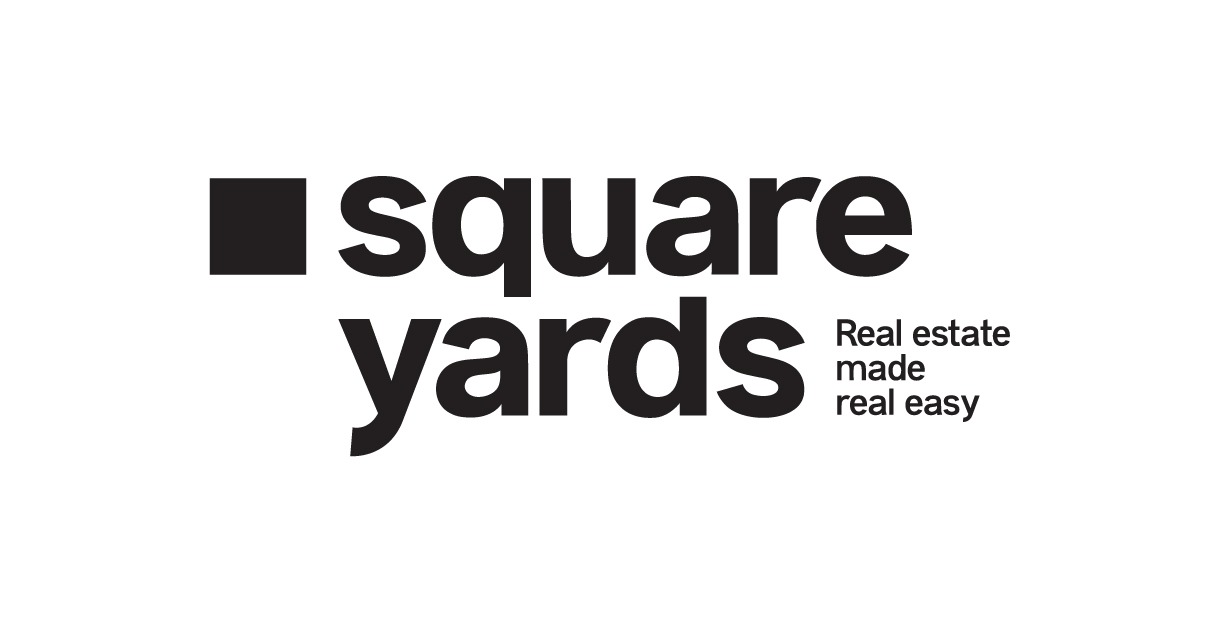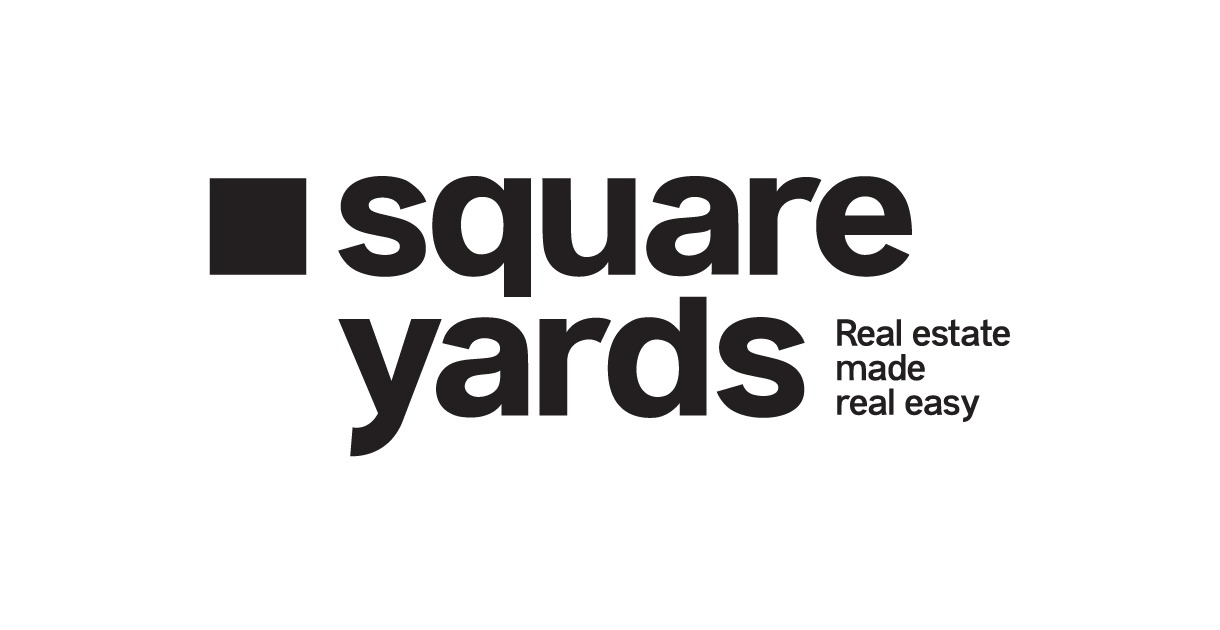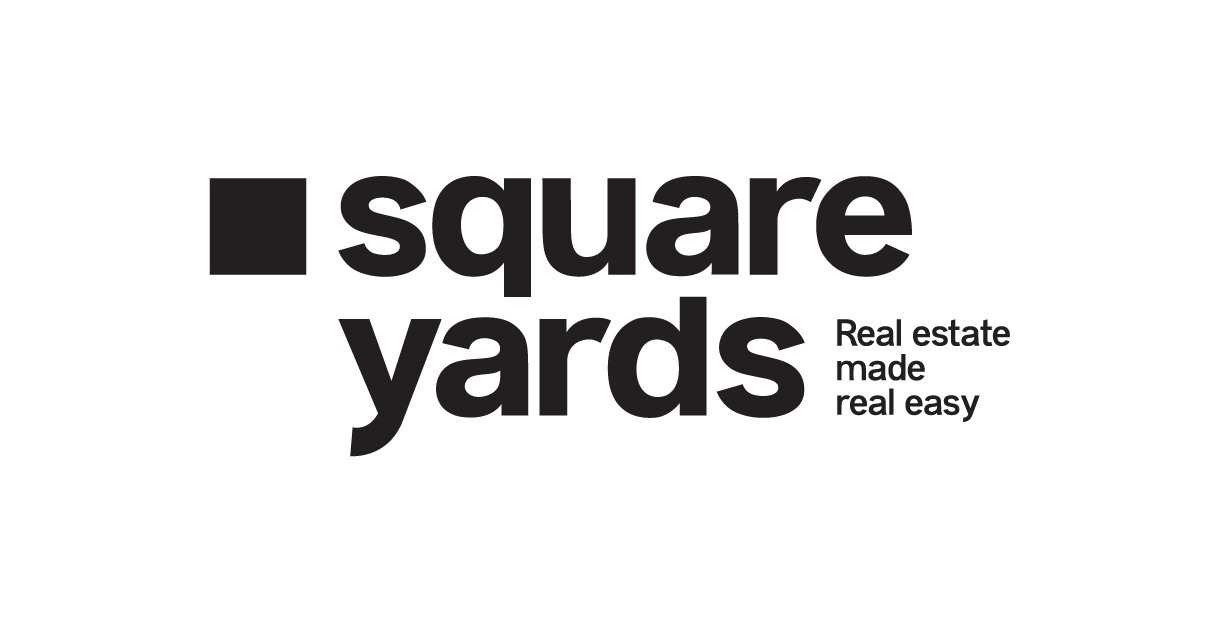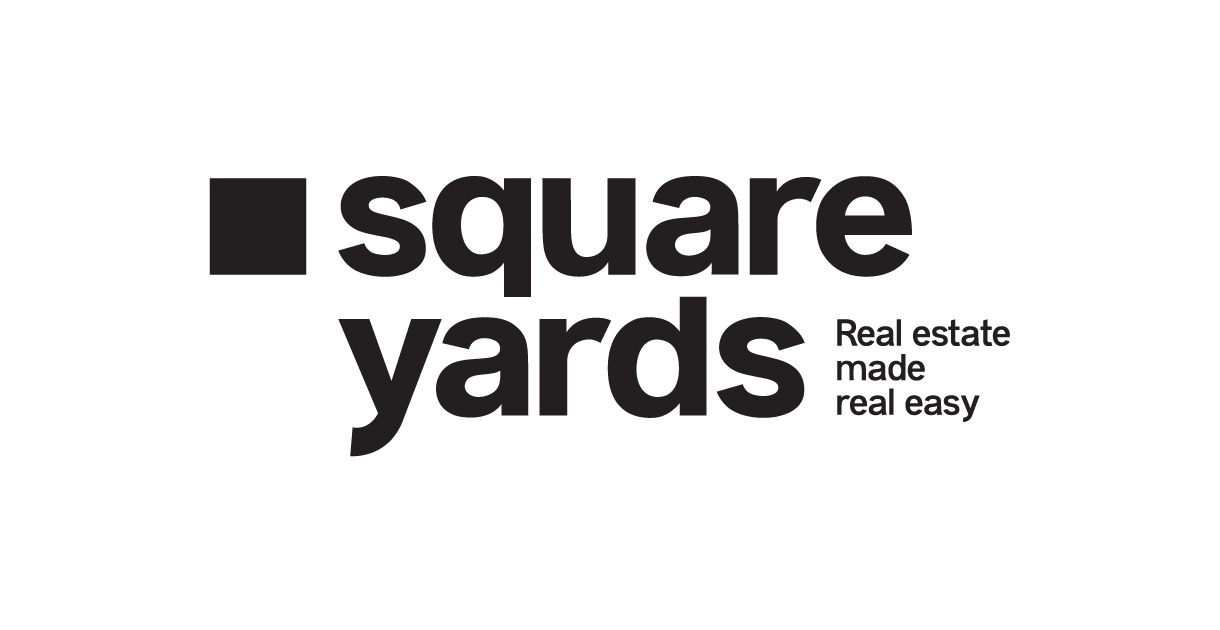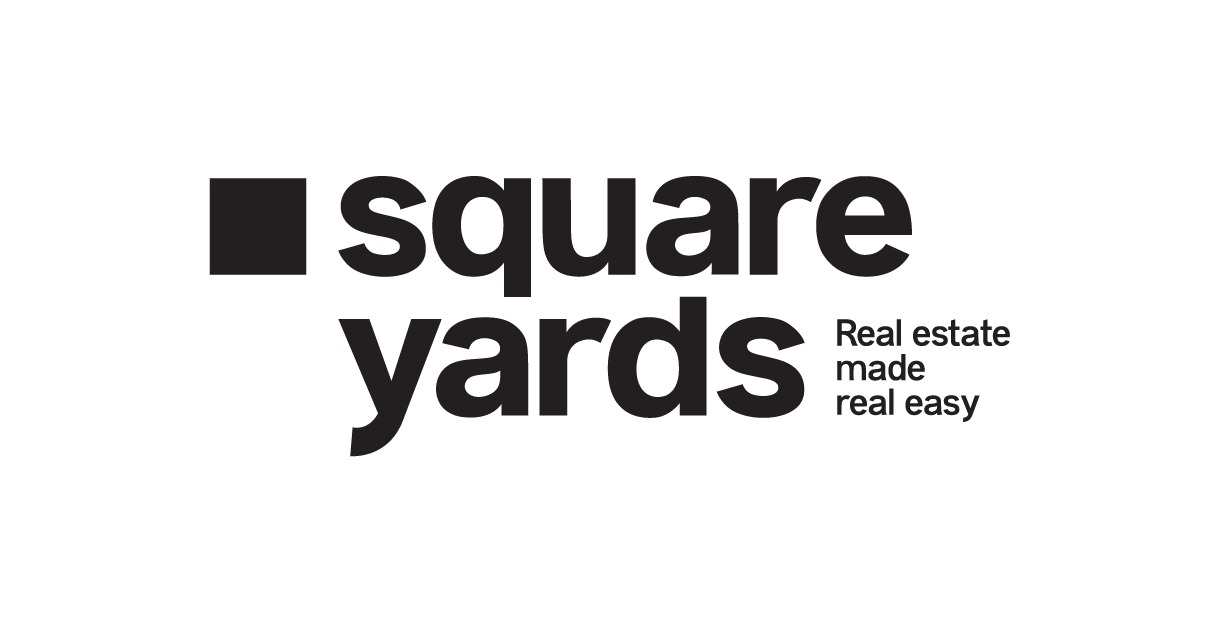| On a black starry night, an unidentified object that looked like an alien spaceship landed on the east coast of San Deigo. |
That’s an interesting clickbait headline to grab eyeballs, isn’t it? Now that we have your attention, we promise you’d be in awe by the end. The only catch – you’ve got to read!
So, is the image above a UFO? A concrete tree? Mind hands holding books? Or is it the Mind Flayer’s newest addition to the Upside Down? (We promise no Stranger Things spoilers ahead!)
Putting your curiosity to rest, this structure certainly doesn’t include aliens – only thousands of students pouring in and out to consume knowledge. What looks more like a space-age tower or a treehouse or a giant mushroom is the Geisel Library in San Diego.
Don’t you love a library with oak desks, cosy chairs, the smell of old books, and large windows? Over the centuries, the architecture of athenaeums has undergone several evolutions. Libraries built during the mid-20th century were often a playground for architectural experimentation. The outcome? Sometimes regrettable, but perpetually ethereal. Evidently, the Geisel Library at the University of California, San Diego, falls in the latter category.
2020 marked Geisel Library’s Golden Jubilee. Even after five decades, this beloved Brutalist architectural masterpiece symbolises the campus ethos. Designed by William Pereira in the late 1960s, the structure is an ingenious blend of Brutalist Architecture (raw concrete, no decoration) and Futurist Style. The library is perched on the edge of a canyon and might seem unusual in reality. As a symbol of Brutalism, the Geisel Library was subjected to controversy and was also included in the Reuters list of the Top 10 Ugly Buildings to Visit. However, it’s a window into a history-altering period of architecture.
In this blog, we highlight how the Geisel Library challenged the stereotypical norms of architecture whilst tracing its history and design.
Chronicling Geisel Library’s Days of Yore
Our spaceship is loaded. Let’s travel back in time to the Spring of 1964.
John Galbraith was appointed the second chancellor of the University of California San Diego. He immediately began lobbying for funds to create a first-rate library that would, in time, stand shoulder to shoulder with the stellar libraries at the Berkeley and UCLA campuses.
In 1965, William Pereira was commissioned to find the ideal location and design the Central Library. After his exhaustive study produced 19 possible results, he and his team recommended a picturesque, wooded area in the centre of the campus that would allow the library to remain a symbolic landmark despite future developments.
The Starchitect
“He built better than he knew” – Ralph Waldo Emerson
While he is often stylised as one of the most unconventional architects of 20th-century American architecture, William. L. Pereira left his mark during the 1960s and 1970s. He graced the cover of Time magazine in 1963 for his bold, futuristic space-age designs, notably the Theme Building at LAX airport and, later, San Francisco’s Transamerica Pyramid. UC Regents wanted something equally iconic for UCSD. The Geisel Library speaks volumes about William Pereira’s conviction to make it a reality. Like any iconic building, it is a joy to walk around in its entirety, look up along one of the concrete columns, and project yourself into the sky of knowledge.
Designing the Geisel Library
“Pereira’s unique Brutalist Design became known worldwide, eventually leading to the University using the building silhouette as the official logo.”
Pereira and his team analysed dozens of university libraries by their massing, circulation and programmatic arrangements. Pereira was a bit of a Goldilocks when it came to designing. The UCSD Library was meant to be architecturally striking, but William Pereira made sure the circulation of light and air worked well for the people. He theorised that some design prospects were more effective at providing certain functions, such as daylight in the stacks, the ability to browse the shelves and the potential for future expansion.
Periera concluded that an ellipse or flattened spherical shape would be the most functional to simultaneously house a large number of books and readers. Concerning future additions, the library could easily expand around the tower base descending into the canyon.
The resulting library towers rose eight stories to a height of 110 feet, a five-level “spheroid” shape perched on top of sixteen 30-foot concrete columns which Pereira intended to call mind hands holding up books.
The exterior of the building was initially envisioned in steel and glass. However, budgetary constraints at the time led to the substitution for concrete. The new design proved to be advantageous, and the building was characterised as a symbol of Brutalism. The architectural design incorporates Breuer-like flares at the piers and an intricate lattice grid on the underside of the floor plates. The robustness of materials, expressive geometric form, and syntactic versatility make Geisel Library an incredible timeless structure.
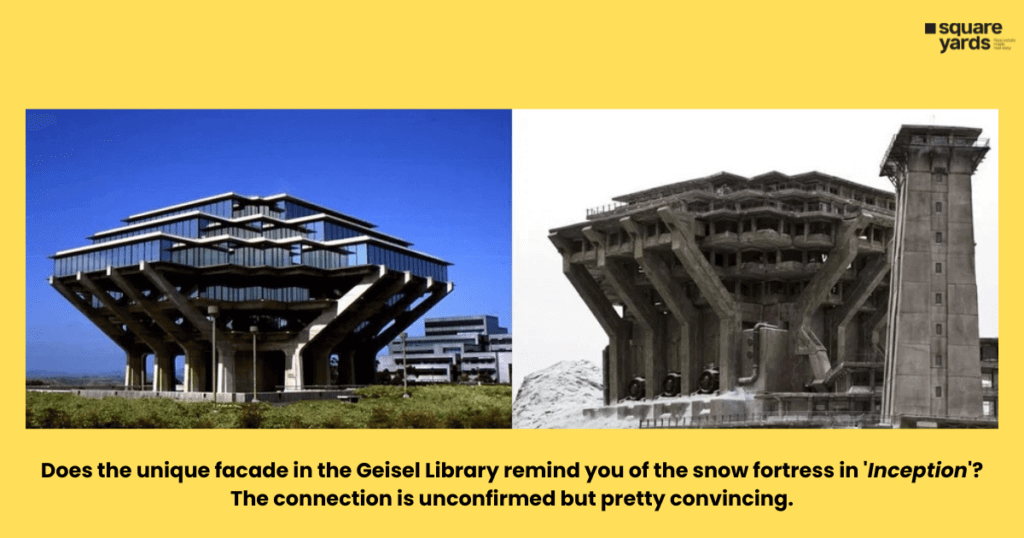
Spreading the Wings
Let’s fast forward to the 1990s.
With the growing student population and increased visitorship, the need to double the existing space became essential. Thankfully, Pereira’s original design allowed for the possibility of expansion in the future. Hence, in 1992, an underground addition began on the east, west and south sides of the building designed by architects Gunnar Birkerts and Buss Silvers Hughes & Associates. This addition intends to extend to the foundation of the strong, geometrical form of the existing structure with the use of glass while preserving the building’s original silhouette and ensuring ample natural light to the lower floors.
After the expansion was complete, the UCSD Library was renamed Geisel Library in honour of Audrey S. and Theodor Seuss Geisel ( better known as Dr. Seuss) for their contributions.
What comes to your mind when you hear the Name Dr. Suess? We hope it’s the immortal children’s character from The Cat in the Hat
Atypical Art Installations
Geisel Library embraces the creative and whimsical nature of its design.
1. Bronze Statue of Theodor Seuss Geisel
The building’s west side graces a life-size bronze statue of Theodor Seuss Geisel on the occasion of 100 birth anniversary. This inspiring sculpture by Lark Grey Dimond-Cates shows Geisel sitting at his desk while a towering “Cat in the Hat” looks over his shoulder. The library is now home to the Dr. Seuss Collection.
2. Carillon Chime
While viewing the sculpture, you may hear the carillon chime. It is an acoustic instrument which can be played live via keyboard from a small room on the library’s roof. The university carillonneur is operated by musician Scott Paulson, an alumnus and a library employee who takes requests and oversees the music commissioning program for the carillon.
3. Snake Path
Walk with us as we escort you to the Snake Path at Geisel Library. A trail that proceeds from innocence to knowledge.
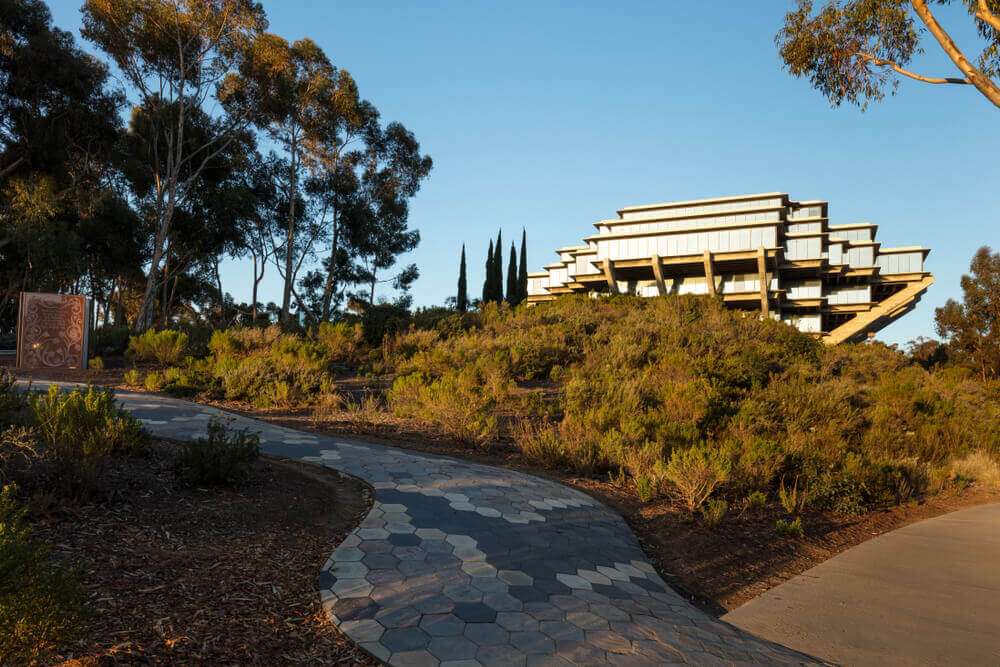
Here, the scales of the snake are hexagonal pieces of coloured slate.On the east side of the building is artist Alexis Smith’s Snake Path ( a part of the UC San Diego Stuart Collection) that winds its way toward the Geisel Library passing the monumental book and an Eden-like garden.

4. Read-Write-Think-Dream
The main entrance doors are emblazoned with the words READ – WRITE – THINK – DREAM by artist John Baldessari reminding students to contemplate the unexpected and envision new worlds.
Library for the Future
Pereire envisioned a Library that would “convey to future generations the idea of power and permanency of the knowledge contained inside it.”

In five decades, the Geisel Library has evolved to keep pace with technological advances in library science, integrating innovative offerings to meet the diverse needs of students and researchers. It houses unique primary works in its special collection and archives. The UCSD Library has digital media labs, private study spaces and data and GIS labs for quantitative and qualitative geographical research. For future prospects, the building is gearing up for a public community space to enhance the user experience by creating collaborative spaces for learning.
The Geisel Library is a monumental building settled on the beautiful canyon ridge, the heart of the UCSD Campus. The astonishing design, combination of materials, and unique study spaces make it flexible in a way that will continue to be relevant in years to come. This iconic symbol of knowledge is rooted in tradition whilst serving as a beacon for tomorrow.
An architectural masterstroke, the Geisel Library traces how San Diego County became a Mecca of science, technology and medicine in the early days of the space-age.


